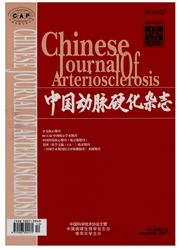

 中文摘要:
中文摘要:
目的将基因通过化学偶联和特异性免疫结合在血管支架上,评价基因递送、局部转染及预防再狭窄的效果。方法以增强型绿色荧光蛋白基因为报告基因,通过化学偶联和特异性免疫结合在血管支架上进行细胞转染实验,评价其基因转染效率;以人肝脏来源的诱导型一氧化氮合酶基因为治疗基因,将携带治疗基因的蛋白涂层支架植入猪冠状动脉进行动物在体实验研究,评价其进行局部转染的效果。结果细胞转染实验发现,实验组支架胶原涂层的表面有大量绿色荧光蛋白基因转染的细胞浸润生长,与支架接触的培养皿表面生长的细胞转染效率约为21.8%,明显高于单纯物理吸附携带基因的支架,而未与支架直接接触的周边细胞几乎没有被转染。猪冠状动脉支架植入实验中,支架植入28天后逆转录聚合酶链反应表明支架段血管内有诱导型一氧化氮合酶基因的表达,肺、肝、肾等远离组织内没有该基因的表达。结论通过化学和免疫双重偶联将基因固定在血管支架上的新型基因递送体系具有局部靶向和高效基因转运的特征,猪冠状动脉实验初步验证通过该方法携带治疗基因进行局部转染、靶向投递基因的有效性。
 英文摘要:
英文摘要:
Aim To evaluate the efficiency of endovascular stent-based gene delivery system using antibody tethered plasmid DNA. Methods Endovascular stents were formulated with a collagen coating. Anti-DNA antibodies were covalently bound to the collagen surface by a cross linking reagent and then pEGFP-Cl (enhanced green fluorescent protein) was immunobound to endovascular stent. Gene transducfion efficiency was evaluated in cell culture. Furthermore, inducible nitric oxide synthase (iNOS) was chosen as therapeutic gene and bound to endovascular stent. Stents with antibody-tethered iNOS were implanted in pig coronary artery to evaluate the transducfion efficiency and the effect of restenosis prevention. Results Gene delivery from stents carrying antibody-tethered pEGFP-C1 demonstrated efficient and site-specific pEGFP-C1 transduction in cell culture. GFP-positive cells were only observed in the site that directly contact with the collagen matrices and the transduction efficiecny was 21.8% vs less than 5% in control group. In pig coronary artery stent deployment studies, reverse transcription polyerase chain reaction (RT-PCR) analyses showed that iNOS was only observed in the blood vessel that contact with the stent, iNOS was undetectable in distal tissues such as lung, liver and spleen, etc. Conclusion Gene delivery system based on antibody immobilized coronary stents provided localized and highly efficient gene delivery for intravascular site-specific gene therapy.
 同期刊论文项目
同期刊论文项目
 同项目期刊论文
同项目期刊论文
 期刊信息
期刊信息
